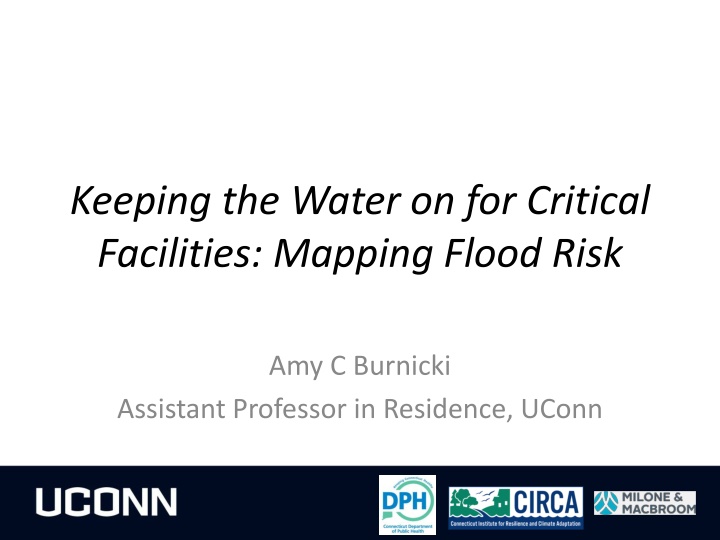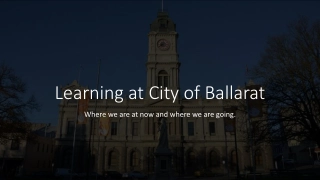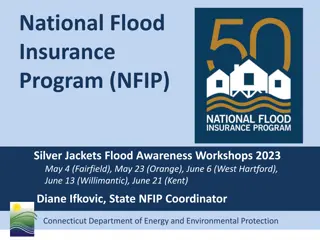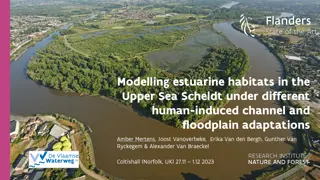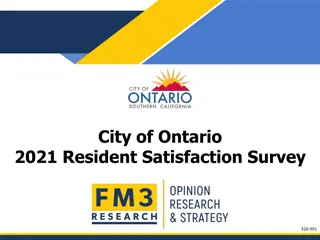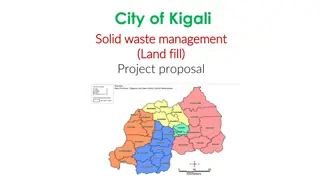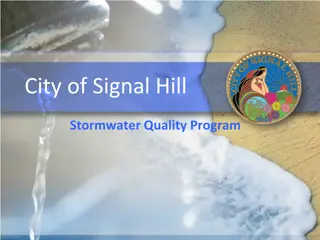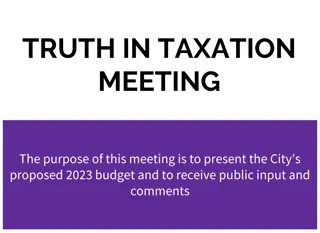City Floodplain Processes & Actions Documentation
This document provides a summary of Houston's strategies and actions related to floodplain management and maintaining its CRS rating. It covers the importance of the updated Floodplain Management Plan (FMP) and the involvement of various committees and public forums in flood mitigation efforts. The Hazard Mitigation Action Plan (HMAP) and the role of the TTI Committee are also highlighted in the document.
Uploaded on Feb 22, 2025 | 2 Views
Download Presentation

Please find below an Image/Link to download the presentation.
The content on the website is provided AS IS for your information and personal use only. It may not be sold, licensed, or shared on other websites without obtaining consent from the author.If you encounter any issues during the download, it is possible that the publisher has removed the file from their server.
You are allowed to download the files provided on this website for personal or commercial use, subject to the condition that they are used lawfully. All files are the property of their respective owners.
The content on the website is provided AS IS for your information and personal use only. It may not be sold, licensed, or shared on other websites without obtaining consent from the author.
E N D
Presentation Transcript
Keeping the Water on for Critical Facilities: Mapping Flood Risk Amy C Burnicki Assistant Professor in Residence, UConn
Analysis Objective assess critical facilities in four counties impacted by super storm Sandy for vulnerability to future flood risk critical priority facilities include commerce centers, hospitals, nursing homes, emergency shelters
Data Critical facilities list of 1617 critical priority facilities Public Water Systems service area footprints for large and small systems large PWS: intake & wells, treatment plants, pump facilities PWS wells Flood risk FEMA flood zones
Data Analysis & Example to illustrate current methodology, illustrative example focused on assessing care facilities 475 care facilities identified and mapped for four county region which care facilities are vulnerable to future flooding based on association with PWS?
Methodology: Step 1 Establish connection between each care facility and PWS assumption: distance-based relationship Closest large or small PWS identified for each care facility in some cases, closest water system was well Results: 425 care facilities linked to large PWS 42 care facilities linked to small PWS
Methodology: Step 2 Determine if PWS is vulnerable to flood risk assessment differed for large and small PWS Large PWS vulnerability of source intakes or wells within flood zone vulnerability of treatment plants within flood zone vulnerability of pump facilities within flood zone Small PWS service area footprint intersected with flood zone determined percent area of intersection
Methodology: Step 2 Large PWS 28 systems had full accounting of system infrastructure 366 out of 425 care facilities (86%) 7 out of 28 vulnerable due to source all intakes and wells located in flood zone 4 out of 28 vulnerable due to treatment plant(s) 2 of 4 were also vulnerable due to source
Methodology: Step 2 Small PWS 115 intersected flood zone (24.6%) threshold: area of intersection accounts for at least 10% of service area footprint 34 vulnerable small PWS (7%)
Methodology: Step 3 Identify care facilities associated with vulnerable PWS Large PWS (n = 366) 71 care facilities vulnerable due to source (19.4%) 42 care facilities vulnerable due to treatment plant (11.5%) note: all 42 were vulnerable due to source Small PWS (n = 42) 14 care facilities vulnerable if apply 10% of area threshold (33.3%)
